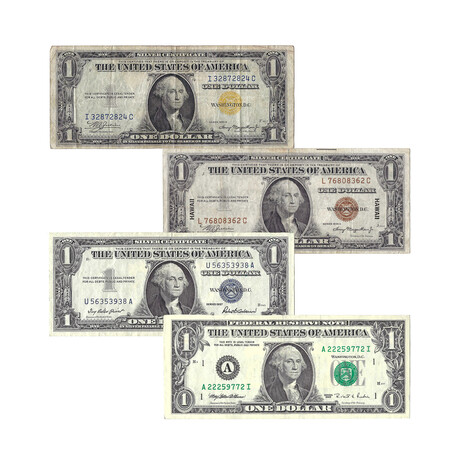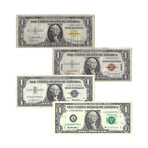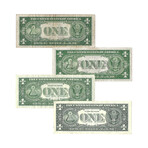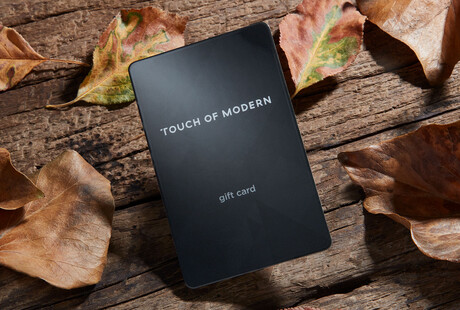Olevian Numismatic Rarities
$1 Small Size US Currency Color Set // 4 Note Set // Lightly Circulated
Product Description
This 4-piece set features one example of every major design of $1 note issued from 1934 to present. It includes four variations on the small-size $1 note including the $1 Hawaii silver certificate, the $1 North Africa silver certificate, the $1 silver certificate, and the $1 federal reserve note. Your product is guaranteed to be genuine and will match the quality of the notes shown. Each note will be housed in an archival-quality plastic sleeve and presented in a luxurious black velvet bag with certificate of authenticity.
Federal Reserve Notes (FRNs) are the only banknotes currently produced in the United States. They were first authorized by Section 16 of the Federal Reserve Act of 1913 and are issued to the Federal Reserve Banks at the discretion of the Board of Governors of the Federal Reserve System. The notes are then placed into circulation by the Banks, at which point they become liabilities of the Federal Reserve Banks and obligations of the United States. FRNs are legal tender and bear the obligation "this note is legal tender for all debts, public and private" printed on each note. They replaced United States Notes, which were once issued by the Treasury Department. FRNs are backed by the assets of the Federal Reserve Banks, which serve as collateral under Section 16. These assets are generally Treasury securities which have been purchased by the Federal Reserve through its Federal Open Market Committee in a process called debt monetizing.
The circumstances surrounding the issuance of emergency currency were somewhat different in Hawaii and North Africa. Under the direction of General Dwight D. Eisenhower, Allied forces launched an extensive military action against the Vichy French in North Africa on November 8th, 1942 known as Operation Torch. The U.S. soldiers who fought in this campaign were paid in cash. To avoid enemy confiscation of American money, a special series of silver certificates was issued for payment to military personnel. These notes bore a unique yellow seal and were the only silver certificates to ever feature this color. Unlike the emergency notes issued in Hawaii, the North Africa notes were otherwise not explicitly marked. Furthermore, whereas the Hawaii notes were printed for circulation among the civilian population, the North Africa notes were distributed only to the military. If seized by Axis powers, these special notes could have been cancelled immediately and rendered worthless.
The North Africa notes were issued in $1, $5, and $10 denominations. All $1 notes were dated series 1935A, while the $5 notes were dated 1934A, and the $10 notes were dated either 1934 or 1934A. The success of Operation Torch was a major turning point in the War, as it removed Axis control over the large North African oil reserves and provided the Allies with a base to launch their offensive into Southern Europe, where the yellow seal notes were again used during the Sicilian campaign of 1943.
Many soldiers returning home from the Pacific and North African theaters brought the unusual brown and yellow seal notes back to the mainland as souvenirs. Today, these scarce emergency issues remain important economic artifacts from World War II that serve as an enduring and tangible reminder of a time of profound crisis and world conflict.
Silver certificates were a form of representative paper money issued between 1878 and 1964 in the United States. They were produced in response to silver agitation by citizens who were unhappy by the Fourth Coinage Act, which effectively placed the United States on a gold standard. The certificates were initially redeemable for their face value in silver dollar coins and later in raw silver bullion (June 24th, 1967 to June 24th, 1968). The original silver certificates from 1878 to 1923 were printed in a large-size format, measuring 7.4 x 3.1 inches. They were issued in denominations of $10 to $1,000 in 1878 and 1880, after which the $1, $2, and $5 denominations were authorized in 1886. In 1928, all U.S. banknotes, including silver certificates, were reduced in size as a cost-cutting measure to their present dimensions. Since 1968, silver certificates have been redeemable only in Federal Reserve Notes and are thus obsolete but remain legal tender at their face value and are technically an accepted form of currency.
Product Details
- Measurements
8"L x 5"W x 3"H
- OriginUnited States
Includes Four Variations On The Small-size $1 Note:
— $1 Hawaii Silver Certificate
— $1 North Africa Silver Certificate
— $1 Silver Certificate
— $1 Federal Reserve Note
Shipping Information
-
Shipping AvailabilityCanada, United States
-
Shipping PolicyStandard Ground Shipping
-
Ship In3-4 weeks ⓘ
-
Return PolicyFinal sale, not eligible for return or cancellation


























































